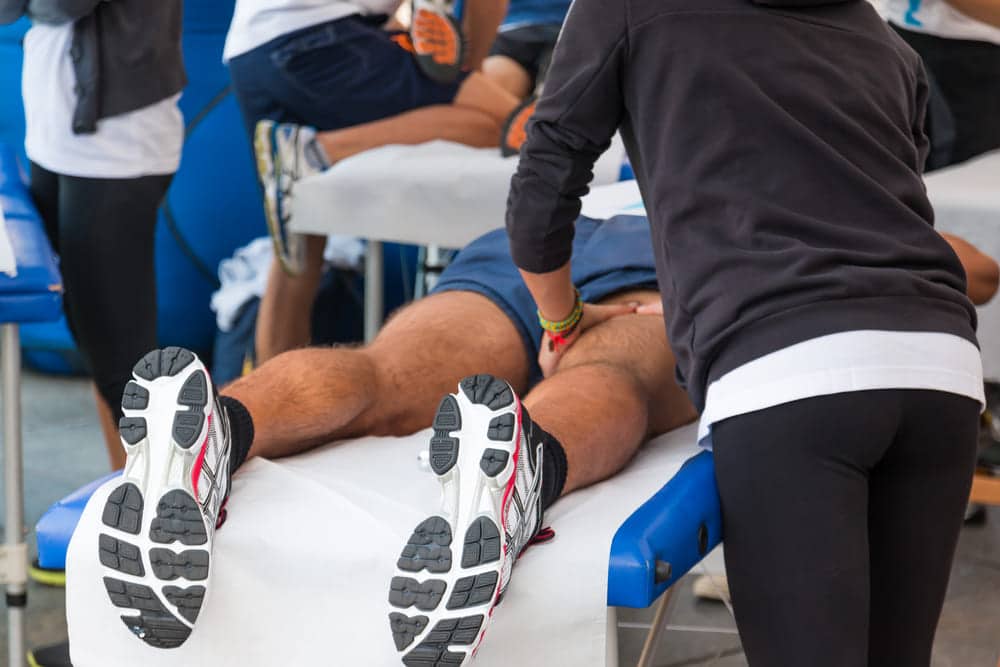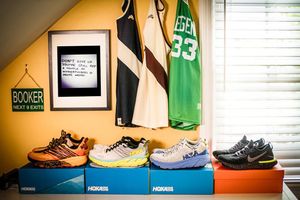It is one of the worst feelings in the world for a runner when they have to take a break from running due to an injury. On top of this, a broken ankle or a fractured ankle is one of the worst ones out there. The important question which every runner has contemplated is, what running after broken ankle will be like? And when should you start running again?
Whether you have had to go through surgery or not, the healing process of a broken ankle can be pretty long. It usually takes about 12 weeks for a broken ankle to heal but it is not recommended that you start going on those long runs from day one.
Healing From An Ankle Fracture
There are two most common ways that people heal from a broken ankle, either through the ORIF surgery or through complete bedrest. The ORIF stands for Open Reduction Internal Fixation but this method is required for the more serious injuries. Usually all you need is a 12-week bed rest, and you should be okay. The only thing you will need are some painkillers and a cast for your leg.
But the problem after this healing period is the muscle imbalance which can occur between the two feet. Of course, because of the prolonged bed rest there will be some muscle loss from the entire body, and you will likely feel a little weaker during the first month, but this muscle loss is especially evident on the foot which was injured.
This is one of the reasons why it is not recommended that you go for a run right after getting healed.
What Are The Effects Of An Ankle Fracture?
A serious injury like an ankle fracture takes a huge toll on your body and your legs. There can be a number of issues in the beginning like some swelling in your legs and continuous pain near your ankles. Sometimes this pain persists even after you are fully healed. This is due to the extra stress of your bodyweight that your ankle is not used to anymore.
Some of the other effects include a loss of range of motion. This basically means that your body has become too tight, including your muscles, ligaments and bones. One of the best ways to build this aspect back up is by stretching or yoga. When you consult with your physiotherapist (and I highly recommend that you do) they will prescribe you specific exercises to help you improve your range your motion.

Decreased strength is something which I have already covered. Because of the muscle imbalance in both of your legs, your overall body balance will also take a hit. To improve your body balance there are systems like the biomechanical Ankle Platform System which are basically boards that help you with your balance. These are some of the aspects which you will have to work on through specific workouts and they will only come back to normal with time.
How To Get Started With Running Again After A Fractured Ankle?
The first thing you should do is slowly build up the strength back again in your ankles and your legs in general. For this you should be doing some low impact exercises like swimming or stationary cycling, something which doesn’t put a lot of stress on your joints. After this, the next step should be to start with some light walking.
Once your ankle is strong enough for long walks and some strength training, then you can start incorporating some light jogging as well.
Remember that this might hurt a little bit in the beginning but its normal, one thing to keep in mind is that you don’t need to push a lot. Your bones and muscles are still weak after the injury and you need to slowly build them back again.
This training regime is based on Wolff’s Law which basically states that your bones and muscles grow proportionately with the level of stress placed on them, but this does not mean that you should start squatting a 100kgs after a fractured ankle.
One of my suggested strength and balancing workouts involve the following:
- Brisk walk for 20-30 min
- Some light yoga or balancing on alternating legs for 30 sec at a time
- Controlled knee dips, about 15-20 each in a set
- 3 sets of 30 calf raises a couple of times a day
- Easy jump ropes, very controlled, you have to perform these exercises like they are medicines and not workouts.
- If you do have access to a swimming pool then 20-25 min of swimming can be very beneficial, or you can opt in for 20-25 min cycling.

I would suggest following a plan such as Runner’s Knee Rehabilitation Plan which is meant for runners with knee issue. I know this might be hard if you were at a pretty high level of running but jumping too soon into anything will probably be a mistake. When you initially start running again, try incorporating some hill climbs as well. The aim in the first two months is to build your leg strength back up.
Your proper running schedule should not start till about 4 months after the injury. Also, before doing any of the things which I have suggested, make sure to consult with your doctor or your physiotherapist. Remember that everybody is different, and some people might just recover faster than you, but just because they did it does not mean that you also will.
After the 4th month you can get back to the 10% rule, which basically means adding about 10% to your long runs every week. you can also start including faster time trial runs. When you push your body, either for longer runs or faster runs, it is normal for your legs to hurt a little. But if at any time the pain is increasing over a couple of days, you should immediately visit a doctor.
REFERENCES:
- https: //www.sparkpeople.com/mypage_public_journal_individual.asp?blog_id=5790653
- https: //www.verywellhealth.com/when-can-i-start-running-after-an-ankle-fracture-2696020



Join the conversation